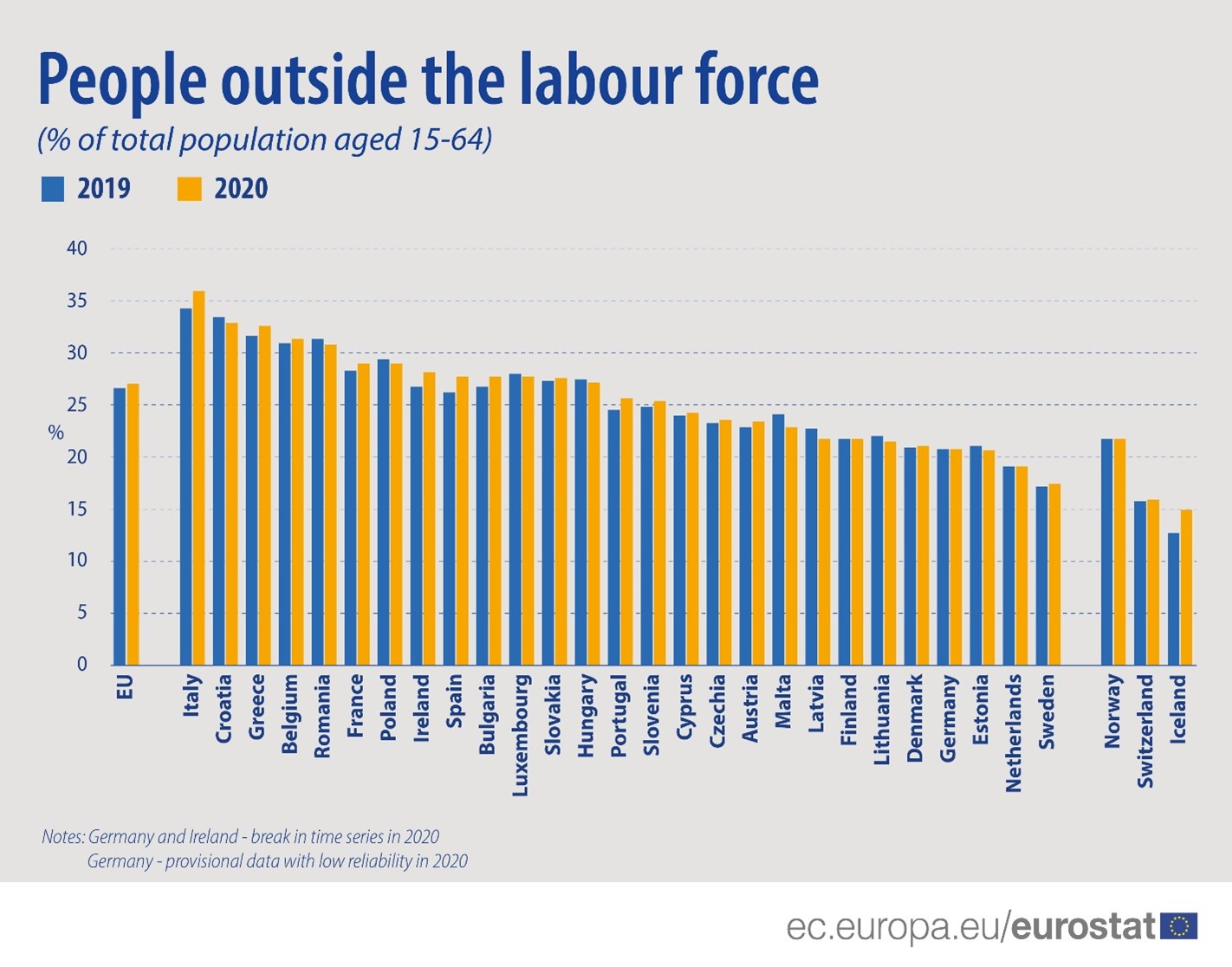The share of people outside the labour force as a percentage of the total working age population (age group15-64) had been on a downward trend: falling from 32.3% in 2002 to 26.6% in 2019 in the EU. In 2020, however, this share increased by 0.5 percentage points (pp) to 27.1%.
People outside the labour force, meaning persons being neither employed nor unemployed, are not available or searching for work for a variety of reasons, for example, because they are enrolled in education, caring for a family member, retired or because of illness or disability.
More women outside the labour force than men
While the share of women and men outside the labour force shows a general downward trend during the 2002-2019 period, there was an upward turn in 2020 compared to 2019 for both genders.
For men, the increase (0.7 pp) was the highest recorded increase since the start of the series. On the other hand, the share of women outside the labour force increased by only 0.4 pp in 2020. However, this was the first increase for women since 2002.
The share of women outside the labour force has been consistently higher than that of men since the start of the time series. However, the gender gap in the EU declined since 2002 (when it was 16.7 pp), reaching its lowest point in 2020 (10.7 pp).
Source dataset: lfsa_ipga
Highest share of people outside the labour force in Italy, lowest in Sweden
In 2020, the Member States with the highest shares of people outside the labour force as a percentage of the total working age population were Italy (35.9%), Croatia (32.9%), Greece (32.6%), Belgium (31.4%) and Romania (30.8%).
In contrast, the lowest shares were recorded in Sweden (17.5%), the Netherlands (19.1%), Estonia (20.7%), Germany (20.8%) and Denmark (21.0%).
Source dataset: lfsa_ipga
Compared with 2019, the largest year-on-year increases in the share of people outside the labour force were recorded in Spain and Italy (each rising by 1.6 pp in 2020), Ireland (+1.4 pp), Portugal (+1.2 pp), Bulgaria and Greece (both +1.0 pp).
In contrast, the highest declines were observed in Malta (-1.2 pp), Latvia (-0.9 pp), Romania and Croatia (both -0.6 pp) and Lithuania (-0.5 pp).
For more information:
- Statistics Explained article People outside the labour force and Unemployment and beyond
- Specific note on Germany: since the first quarter of 2020, the Labour Force Survey (LFS) has been integrated into the newly designed German microcensus as a subsample. Unfortunately, for the LFS, technical issues and the COVID-19 crisis has had a large impact on the data collection processes, resulting in low response rates and a biased sample. Changes in the survey methodology also led to a break in the data series. The published German data for 2020 are preliminary and may be revised in the future.
To contact us, please visit our User Support page.
For press queries, please contact our Media Support.



